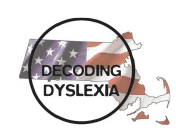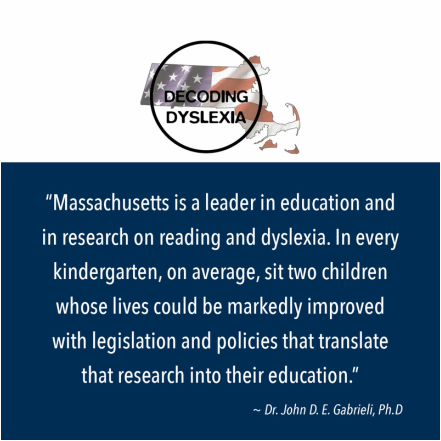Neuroscience can help you understand dyslexia.
Click on the blue highlighted areas to link to videos:
Start here with this video to learn more about the neuroscience of dyslexia by watching a video.
November 2015 Presentation on Developmental Dyslexia by Dr. Nadine Gaab
This was presented in Weston for parents and educators. Very informative!
Developmental Dyslexia - Dr. Gaab
Learn more from Dr. Ken Pugh of Haskins Laboratory about Reading and Visual Spacial Abilities.
This is a more detailed explanation of how reading creates pathways and how students build the connections brains need to read.
Why is it that Neuroscience and knowledge of dyslexia and other differences are so misunderstood and the diagnostic manuals do not accurately reflect the important research and neuroscientists and brain imaging? Why is this important?
Watch this video with Dr. John Gabrieli and see why this brain information should be part of educational practice and policy.
2012 Lecture on Brian Imaging, Reading and Dyslexia and Learning.
Six Segments complete an excellent series to explain the neuroscience of dyslexia and how it effects students and the implications for education : Neuroscience of Reading and Dyslexia Carol Whitney 6 videos: The series consists of six segments: 1. Introduction, 2. Speech, 3. Vision, 4. Reading Acquisition, 5. Dyslexia, and 6. Instruction/Remediation.
The segments should be watched in order, as each one builds on the previous ones. A document with scholarly references for material presented in the videos is available on Ms. Whitney's ResearchGate page: https://www.researchgate.net/profile/Carol_Whitney/contributions https://www.youtube.com/playlist?list=PLRw26d3B0rX6Bgtejpn6i_loNQXGYQWh1
Start here with this video to learn more about the neuroscience of dyslexia by watching a video.
November 2015 Presentation on Developmental Dyslexia by Dr. Nadine Gaab
This was presented in Weston for parents and educators. Very informative!
Developmental Dyslexia - Dr. Gaab
Learn more from Dr. Ken Pugh of Haskins Laboratory about Reading and Visual Spacial Abilities.
This is a more detailed explanation of how reading creates pathways and how students build the connections brains need to read.
Why is it that Neuroscience and knowledge of dyslexia and other differences are so misunderstood and the diagnostic manuals do not accurately reflect the important research and neuroscientists and brain imaging? Why is this important?
Watch this video with Dr. John Gabrieli and see why this brain information should be part of educational practice and policy.
2012 Lecture on Brian Imaging, Reading and Dyslexia and Learning.
Six Segments complete an excellent series to explain the neuroscience of dyslexia and how it effects students and the implications for education : Neuroscience of Reading and Dyslexia Carol Whitney 6 videos: The series consists of six segments: 1. Introduction, 2. Speech, 3. Vision, 4. Reading Acquisition, 5. Dyslexia, and 6. Instruction/Remediation.
The segments should be watched in order, as each one builds on the previous ones. A document with scholarly references for material presented in the videos is available on Ms. Whitney's ResearchGate page: https://www.researchgate.net/profile/Carol_Whitney/contributions https://www.youtube.com/playlist?list=PLRw26d3B0rX6Bgtejpn6i_loNQXGYQWh1
| dr._nadine_gaab_presentation.pdf |
| atypical_sulcal_pattern_in_children_with_developmental_dyslexia_and_at-risk_kindergarteners.pdf |
| _ran_norton_wolf_2012_arp.pdf |
The Presentation below was part of the testimony submitted on May 28th in person and on paper by Elizabeth S. Norton, PH.D. representing the Gabrieli Lab of MIT’s McGovern Institute of Brain Research and Dept. of Brain & Cognitive Science.
PRESS PLAY below
PRESS PLAY below

